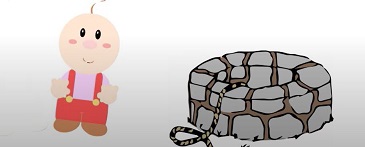揭諦 揭諦 波羅 揭諦 波羅僧 揭諦 菩提 娑婆訶 a-je a-je ba-ra-a-je ba-ra-sung-a-je mo-ji […]
Mantra For Correcting Mistakes and Omissions (補闕真言)
There is a much shorter mantra in the Korean tradition with the same title. But this video is of a different, longer version used today in China. It is a really lovely video in which a mother is teaching the mantra to her daughter. 補闕真言 南無喝囉怛那,哆囉夜耶。 佉囉佉囉。俱住俱住。 摩囉摩囉。虎囉,吽。賀賀, 蘇怛拏,吽。潑抹拏,娑婆訶。 nā mó hē là dá nà […]
Getting Hold of the Ox
竭盡神通獲得渠 心強力壯卒難除
竭 jié exhaust; use up
盡 jìn end; finish; use up
竭盡 exhausted
神 divine
通 tōng pass through; expert; know well
神通 = Abhijñā (अभिज्ञा) direct knowledge; higher knowledge
“A cave and a grave are not two.”
心生故種種法生, 心滅故龕墳不二 “Because of the arising of thought, various phenomena arise; when thought ceases, a cave and a grave are not two.” Master Wonhyo 心 mind, thought 生 born 故 (gù) cause, reason 種種 (zhǒng zhǒng) all kinds of 法 dharma, thing 生 born 心 mind, thought 滅 (miè) destroy, extinguish 故 cause, reason 龕 […]
“All people have it, but the worthy are able to be consistent in it.”
Let’s look at two Chinese characters. Not two characters squished together to make one character, and not a “compound” character, either, but rather two separate characters one after the other that make a complete sentence. So here they are: 性善 (pinyin: xìng-shàn). The meaning of this sentence, which is one of the most important utterances […]
大悲咒 (Great Compassionate Mantra)
大悲咒 (Great Compassionate Mantra). This is one of the most popular mantras among present-day Buddhists. It is not to be confused with the longer mantra that is also often referred to as 大悲咒, and in English is often simply called “The Great Dharani”. That longer mantra is also known as “The Nilakantha Dharani”, but the […]
“Do not pass your days and nights in vain.”
In Chinese, the two character combination 光陰 (guāng-yīn) literally means “light-dark”. But the intended sense is like that in the English phrase “day in, day out”. Or even like that in the song “Sunrise, Sunset”. This phrase occurs in the ancient poem called “The Harmony of Difference and Sameness” (aka The Sandokai), in the line: […]
“Does Heaven speak?” (Analects 17.17)
From The Analects, 17.17. In the Analects 17.17 (the numbering varies), we have a very interesting “saying” of Confucius with a meaning that is pretty easily gleaned from a literal translation of the characters. At least that’s how it seems to me. Presumably someone with a deeper understanding of Classical Chinese (and that certainly wouldn’t […]
“Superior people look within, common people seek outside.” (Analects, 15.20)
子曰。君子求諸己。小人求諸人。 The Master said, “Superior people look within, common people seek outside.” 子曰 (Zi yue) The Master said 君子 (jūn zǐ) Superior people. Literally “honorable masters”. 求諸己 (qiú zhū jǐ) Search within oneself. Literally: “seek every oneself”. Note: 諸 appears in several idiomatic phrases where the meaning of “every/all” doesn’t really make much sense. This […]
The Four Great Vows (四弘誓願)
The teachings are infinite; we vow to learn them all.
法門無量誓願學
法門 Pinyin: fǎ-mén. Meaning (literal): Dharma gate. Composition: 法 + 門 (“Dharma” + “gate”)
無量 Pinyin: wú-liàng. Meaning: immeasurable. Composition: 無量 (“no” + “measure”)
學 Pinyin: xué. Meaning: learn








